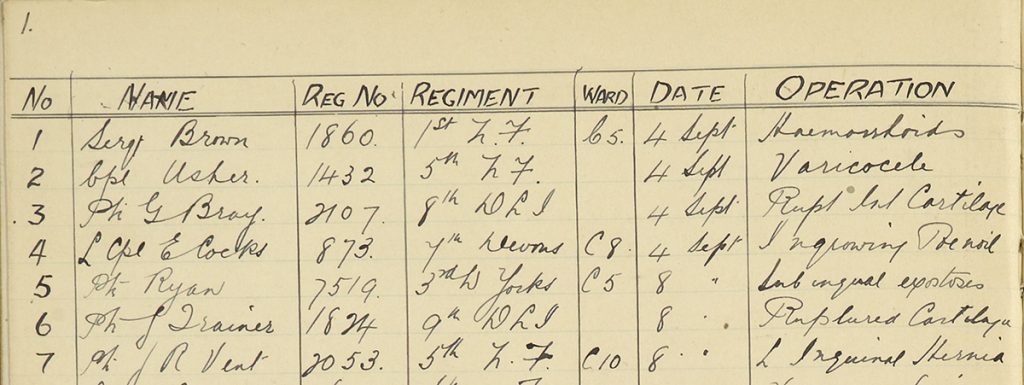First World War Surgical Logbook
Surgical operations carried out by Professor Frederick Charles Pybus at First Northern General Hospital from 1914 - 1919.
As part of Newcastle University’s experience during the First World War, the major buildings of Armstrong College (1904 – 1937), a forerunner of Newcastle University, were requisitioned to form the First Northern General Hospital for the treatment of wounded military personnel. As of 1914, this part of the campus amounted to the Armstrong Building, the King Edward VII School of Art (now part of the Hatton Gallery), and the Agriculture Building (now part of the Architecture Building).
Newcastle wasn’t alone in this respect, with similar fledgling universities requisitioned in Leeds, Birmingham, Sheffield and London, meaning many buildings could not be used for teaching purposes until late 1919.
Prior to this global conflict, military hospitals accommodated approximately 7,000 beds. By the end, there were 364,133. To ease this unprecedented demand, universities were joined by local government and other municipal bodies, as well as private individuals, in the expectation they cooperate with the Army Medical Service to relieve the crisis.
Over the course of the war, the First Northern General Hospital took in at least 41,896 servicemen, both from home and overseas. The wounded could request a hospital near their home, but for practical reasons, this may have been more to do with where there were vacancies.
The Registrar of the First Northern General was Professor Frederick Charles Pybus (1883 – 1975). Pybus was a surgeon and alumni of Durham College of Medicine, another forerunner of Newcastle University, graduating in 1905.
He joined the First Northern General Hospital shortly after its formation and was serving as its Registrar in 1914. As a Major in the Royal Army Medical Corps, except for a brief posting at the 17th General Hospital in Egypt, he served as a surgeon based within the buildings of Armstrong College.
Here, he is known to have carried out 1,364 operations between 14th September 1915 and 12th April 1919, all detailed in this surviving surgical logbook (FP/1/3/8). The front cover reflects that these operations took place in Operating Theatre C, which is believed to have been in the King Edward VII School of Art building (now the Hatton Gallery).
The logbook is a handwritten account of patients’ names, regiments and numbers, the dates of their operations, the types of operations performed, the anaesthetic and anaesthetist used, the result of any operations, and any additional remarks. Common injuries treated include G.S.W. (gun shot wounds), varicose veins, appendicitis, and hernias.


A photograph of Pybus (central, with mask) is tipped into the operation logbook, wearing a surgical mask with medical colleagues. An annotation on the back hints at the difficulties Pybus faced, as he highlights only having one assistant, no lighting, and no running water.
A gap in this logbook between the middle of December 1917 and May 1918 and the letters between him and the Northern General hospital tells us that Pybus suffered from neuritis (inflamed nerves) which led to him being demobilised for a short period, with Pybus concerned he was not capable of performing his often lifesaving duties.
Professor Pybus went on to have a distinguished career as a surgeon in the Royal Victoria Infirmary from 1920 until his retirement in 1944, becoming Professor of Surgery in the College of Medicine in 1941.

His lifelong concerns included cancer research, developed during his 50 year surgical career from 1924 and pursued through his own cancer research laboratory. He was amongst the first to make the link to atmospheric pollution as a major contributing cause of cancer and his work directly informed the Clean Air Act 1956. His archive was fully catalogued in 2015 thanks to a Wellcome Trust funded project.
Pybus was also a prolific collector of books, manuscripts, and artwork relating to the history of medicine. The Pybus Collection, rich in classics texts associated with anatomy, surgery and medical illustration, is of such distinctiveness and prestige, Newcastle University Librarians were given the honorific ‘Keeper of the Pybus’ following its donation in 1965.
A more uncertain and regionally infamous claim linked to Pybus, one which he recounts in his archive, is that he was the inventor of an early Lucozade prototype to fortify patients before surgery.

